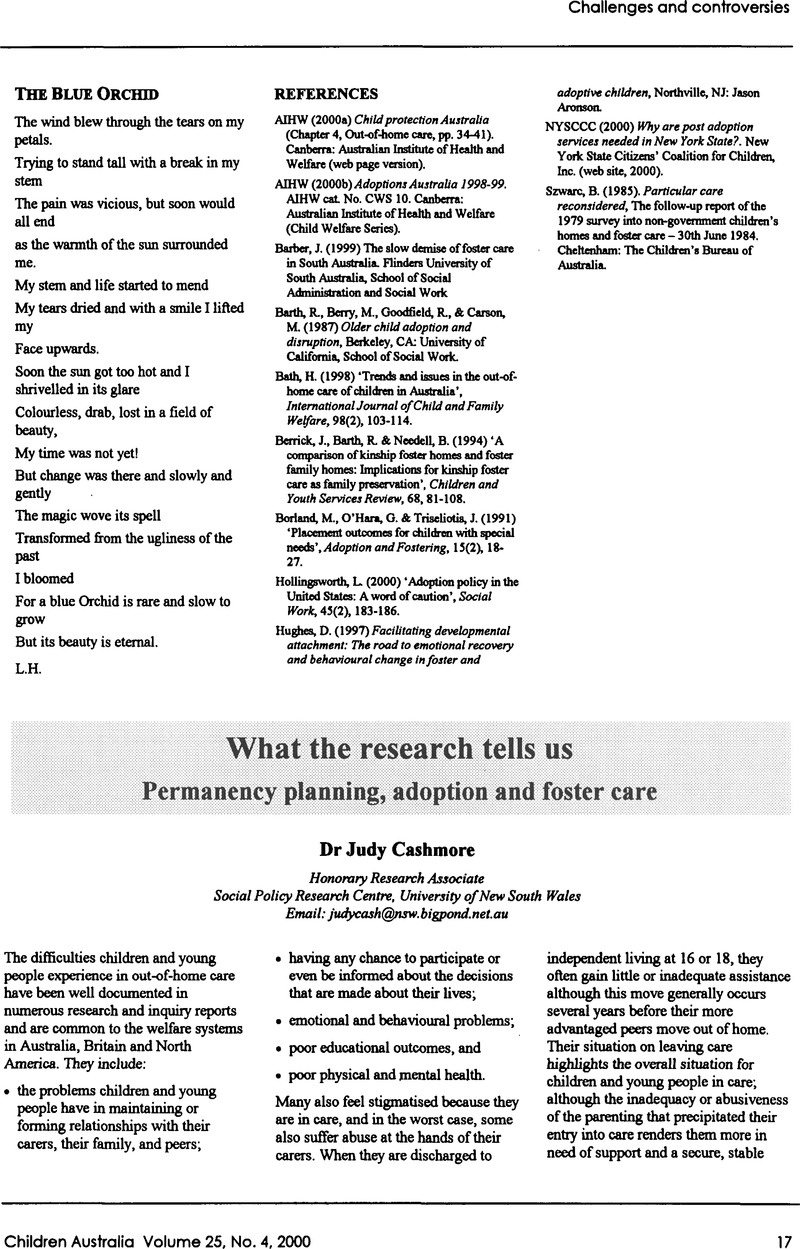Crossref Citations
This article has been cited by the following publications. This list is generated based on data provided by Crossref.
McCallum, Sharon
and
Eades, Di
2001.
Response to: ‘New Directions in child protection and family support in Western Australia: a policy initiative to re‐focus child welfare practice’.
Child & Family Social Work,
Vol. 6,
Issue. 3,
p.
269.
Brydon, Kerry
2004.
Untreatable families? Suggestions from literature.
Australian Social Work,
Vol. 57,
Issue. 4,
p.
365.
Kennedy, Barbara
and
Thorpe, Rosamund
2006.
Selecting Foster Carers: Could Personnel Psychology Improve Outcomes?.
Adoption & Fostering,
Vol. 30,
Issue. 3,
p.
29.
Tregeagle, Susan
and
Treleaven, Lesley
2006.
Key questions in considering guided practice for vulnerable Australian children.
Australian Journal of Social Issues,
Vol. 41,
Issue. 3,
p.
359.
Vicary, Dave
2015.
Children Australia–A 40 Year Retrospective of Australian Out-of-Home Care: Reflections of the Past and Future Directions.
Children Australia,
Vol. 40,
Issue. 4,
p.
274.
Del pozo de bolger, Andrea
Dunstan, Debra
and
Kaltner, Melissa
2018.
A conceptual model of psychosocial adjustment of foster care adoptees based on a scoping review of contributing factors.
Clinical Psychologist,
Vol. 22,
Issue. 1,
p.
3.
Luu, Betty
Collings, Susan
and
Wright, Amy Conley
2022.
A systematic review of common elements of practice that support reunification.
Children and Youth Services Review,
Vol. 133,
Issue. ,
p.
106342.
Ward, Harriet
Moggach, Lynne
Tregeagle, Susan
and
Trivedi, Helen
2022.
Outcomes of Open Adoption from Care.
p.
267.
Hermeston, Wendy
2023.
First Nations Children and Families and Permanency Planning Reform: The Evidence Counts.
Australian Social Work,
Vol. 76,
Issue. 3,
p.
358.





